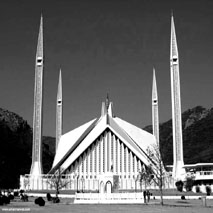Demonising Hijab
THE article titled ‘Matters of hijab and choice may go too far’ by Prafull Goradia, a BJP member about the same age as me – published in the Pioneer newspaper of India on February 11 took my memory decades back.
And I just could not help expressing my views on the situation in pre-partition days, and now.
The sight of a horde of hooligans yelling at a young girl wearing hijab, as shown on television, was not what I had expected in a country where I spent my happy childhood and of which I still cherish pleasant memories.
It was a peaceful part of India, and had the Mausoleum of the Muslim Saint Tajuddin Baba, who was revered both by Hindus and Muslims who all used to go to the shrine to pay homage. I also remember we Muslim boys used to play Holi with Hindu boys while Hindus used to visit and greet us on Eid. Moreover, during Ram Lila Nataks, we Muslim boys were given privileged front seats.
And even when Hindu-Muslim riots started in some regions of India, the city and its surrounding region remained tension-free.
Various communities, while following their religion lived in perfect harmony, with no friction, much less rioting.
Here, I am of course talking of the period prior to the partition of the subcontinent. As it happened, the founder of Pakistan, Quaid-i-Azam Muhammad Ali Jinnah addressed a public meeting in the city.
And listening to him, all Muslims in my father’s government office opted for Pakistan. I must clarify here that the decision was made voluntarily and was in no way caused by fear of any Hindu-Muslim riots in the region.
How tension-free was the atmosphere in the city can be judged from the fact that a Hindu colleague of my father, who was originally from Lahore, also opted for Pakistan and I believe he was the one who persuaded others to opt for Lahore instead of Karachi which, because of its mild climate, was the popular destination for migrants from India.
Destined for Pakistan, the family travelled with us up to Delhi but then the Hindu-Muslim riots started and the Hindu family changed its mind whereas we, after being held up in Delhi briefly, continued our journey to Pakistan.
I remember in those days, Muslim women in India were far more strict in observing ‘Pardah’. And when women had to go out, the usual carriage was the Tonga (The horse-drawn carriage) And to protect women from public view, sheets were affixed to the Tonga.
And not stopping at that, from the door of the house right up to Tonga, family members stood holding sheets on both sides, again to shield women from public view. Of course, this was not really a religious requirement for Muslim women but was more a part of custom and tradition.
The near-equivalent of this for Hindu women was observing the ‘Ghoonghat’ which involved covering their head and face with a veil.
But then, neither the Muslims nor Hindus had any problem with Ghoonghat or Pardah. If these customs were not forced on women, the persons concerned felt comfortable doing that, and the activity did not harm others in any way, why should anyone object? Over the years, the Muslim women of India have dropped that degree of pardah-observance, while not as many Hindu women observe ‘Ghooghat’ now.
In fact, Hijab is a greatly scaled-down version of Pardah that I have described above. So, why should anyone object to it? And not stopping at that, start seeing in the Hijab observance a move to stir up ethnic tensions in India, as part of separatist agenda, complete with sinister intentions of giving India a bad name internationally?
Now, apart from extreme savagery demonstrated near-about partition time in some areas, on both sides of the border, the vast majority of population in both India and Pakistan comprises fairly moderate and peaceful persons.
But since one religiously-motivated thug can over-shadow hundreds of peaceful persons, even a small minority of misguided religious zealots belonging to just any faith spoils the overall atmosphere. In fact, both Pakistan and India have suffered this ailment.
And while extremism in the name of religion, bordering on fanaticism and extremism in Pakistan was introduced and encouraged by Gen. Zia, it was finally brought under control through well-planned and firm government action against such elements.
On the contrary, religious extremism in India is on a continuing upward trajectory. It all started with massacre of Muslims in Gujarat during Narindra Modi’s tenure as chief minister from 2001-2014, where-after all hell broke loose when he became, and still is India’s Prime Minister.
Numbering around 200 million, Muslims form the largest marginalised group in India though Sikhs, Christians and Dalits also suffer terribly.
And this comes on top of Modi turning IoK into the largest open-air prison on the planet. Modi’s rule has proved a curse for India, which has lost its secular image and is worst-rated politically, economically and even militarily.
As against India’s claim of the ability to fight a two-front war, taking on China and Pakistan together, India has lost territory to China in recent skirmishes, with no help forthcoming from its strategic ally the US and its group of divided allies supposedly lined up against China and Russia.
And all of India’s investment in Afghanistan has been wiped out. So, Modi has brought disgrace to India on all fronts, with India’s countdown to eventual breakup already started. However, there are still sane options available to Modi to avert the impending disaster.
Let us hope that having tried and failed in becoming the region’s dominant power, Modi sees sense and adopts a realistic and positive approach towards all Indians and neighbours, and opts to live in peace and harmony with China, Russia, Pakistan and other states in the region and beyond.
— The writer is senior political analyst based in Karachi.










